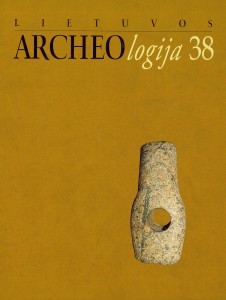Geležies amžiaus gyvenvietė Kernavėje: ilgalaikio apgyvendinimo atspindžiai archeologinėje medžiagoje
The Iron Age settlement at Kernavė: Reflections of long-term habitation in the archaeological material
Author(s): Rokas VengalisSubject(s): Archaeology
Published by: Lietuvos istorijos institutas
Keywords: Kernavė; Iron Age settlements; settlement structure; spatial analysis; long-term habitation
Summary/Abstract: The article analyses the structure of the archaeological Iron Age (1st–12th century) settlement at Kernavė. By analysing the settlement’s finds, cultural layer, and features, an effort was made to reveal what were the tendencies of their spatial distribution in the settlement and what information the remains of this material provides about the structure of the settlement that actually existed. After systemising the settlement’s material, concentrations, several tens of metres in diameter, of finds and features from separate periods were distinguished. These concentrations are located at a different place in each period. This shows that the archaeological settlement, which occupies a large area, was in fact inhabited sparsely and it appears that it was only separate single-residence farmsteads. These farmsteads did not stand in the same place the entire period of the settlement’s existence; at some interval they were moved a certain distance from the earlier location. The ‘movement’ of the farmsteads occurred within the boundaries of a defined territory, and an archaeological settlement much bigger in diameter gradually formed from the isolated small diameter concentrations within it. The analysis conducted here allows the likely locations of these farmsteads to be distinguished, but data about the structure and layout of these farmsteads is still greatly lacking.
Journal: Lietuvos archeologija
- Issue Year: 2012
- Issue No: 38
- Page Range: 175-220
- Page Count: 46
- Language: Lithuanian

